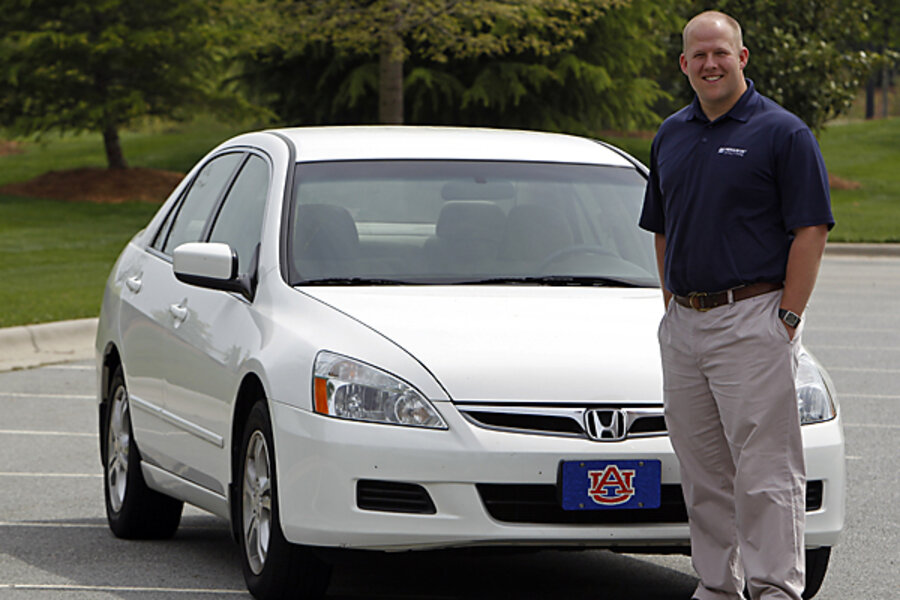Little difference on odometer, big difference for used car price?
Loading...
Is a penny only a penny? We see firms pricing products for $9.99 to avoid "double digits" or $99.99 to avoid a "triple digit" price tag. These firms must believe that consumers see a "jump" between the price of $9.99 and $10 and that consumers will be less likely to buy the "expensive" product even if it costs just 1 penny more. In this new NBER paper, Lacetera, Pope and Sydnor have managed to access a 22 million observation used car data set and they document a very funny new fact.
When they graph the used vehicle's sales price with respect to its odometer reading, they see a sharp reduction (a discontinuity in nerdspeak) at salient cut points such as 10,000 mile intervals (so 10,000, 20,000, 30,000 etc). This suggests that folks are engaging in "rounding" off significant digits. So consider two identical used 2004 Volvos. One has an odometer reading of 59,967 and other is at 60,012. These researchers are claiming that a typical buyer does not view these vehicles as identical because the buyer thinks; "the first car has 50,000 miles while the 2nd car has 60,000" miles. This is what I mean by "rounding" -- not rounding up but just working with 1 significant digit. If buyers view the 59,967 mile vehicle as a 50,000 mile vehicle then they will be willing to pay more for it and these researchers will observe a higher used vehicle price for the 59,967 mile vehicle relative to its 60,012 mile twin. Their regression statistical techniques are simply averaging over these pair comparisons.
My question for the authors is whether the used vehicle sellers are aware of this dynamic? If so, then the authors should see "too many" used vehicles being sold that have a "9" in their 2nd digit if the vehicle has <100,000 miles or a 9 in the 3 digit for vehicles that have > 100,000 miles. In these cases, the sellers could extract extra $ from "dumb" buyers.
Is this an important result? Yes. 22 million observations is pretty serious. Now, I don't know how steep is the price/mileage capitalization effect. In English, for every extra 1,000 miles on the odometer how much a price discount does a used car sell for? The larger this is then the larger is the "mistake" the buyers are making when they "miss out" that they just purchased a 59,950 mile vehicle that they incorrectly viewed as a 50,000 mile vehicle. In this case, they are handing out free $ to the seller. Maybe they are altruistic?
Now all authors want to believe that their findings generalize. Do these results generalize? What other settings could be studied?
Add/view comments on this post.
--------------------------
The Christian Science Monitor has assembled a diverse group of the best economy-related bloggers out there. Our guest bloggers are not employed or directed by the Monitor and the views expressed are the bloggers' own, as is responsibility for the content of their blogs. To contact us about a blogger, click here. To add or view a comment on a guest blog, please go to the blogger's own site by clicking on the link above.





